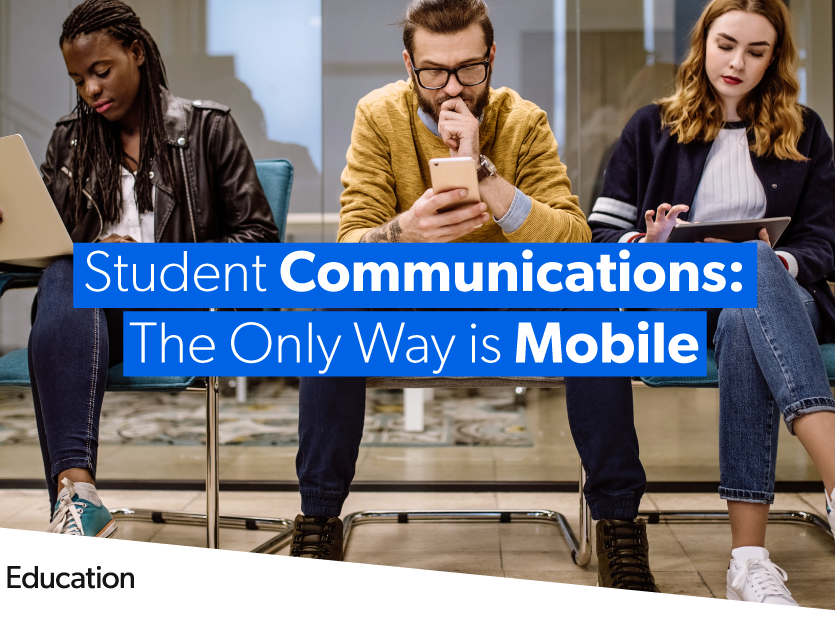
Student Communications: The Only Way is Mobile
This probably won’t come as a shock, but email no longer seems to be the most effective way of communicating with students.

This probably won’t come as a shock, but email no longer seems to be the most effective way of communicating with students. The average open rate of emails in education is just over 30% at this point. As the open rate is dropping, students are missing out on a lot of relevant information. There is a lot to be done for institutions but the solution may just be easier than many would have thought. The current, digital minded generation of students is also a mobile first generation. Adapting the approach will go a long way for your institution to better inform and engage with students.
Students on average spend 8-10 hours a day on their smartphones so it makes a lot of sense for institutions to start leveraging mobile as a channel. One of Ready Education’s mobile solutions shows a 90.5% open rate for push notifications sent in 2022. Compared to the 30% open rate of emails, this is a clear indication that a mobile-first approach will help you improve communication and increase engagement.
Mobile first
One of the worries institutions often have is the adoption of a mobile app. If students don’t adopt a student app, then indeed there is no point in having one. However, students are simply waiting for you to launch a mobile app that modernises the way you provide information to students and engage with them, meeting their expectations.
As Marlene Tobias, Principal Administrative Officer at the University of Wales Trinity Saint David, said after adopting one of Ready Education’s solutions: “The app has proven its value for our students, but also for our organisation. Students love using the app and because of our 95% adoption rate, we are able to support almost all of our students through one single platform.”
Driving Student Engagement
Introducing a mobile-first approach will help you improve communication and increase student engagement, as you will reach students where they are: on their smartphones. Students can access all the information they need, stay in touch with campus life, and easily engage with fellow students and staff at your institution, creating a sense of community and belonging crucial to their success.
A UK study confirms the importance of belonging in retention, where academic engagement and social engagement both play vital roles. The finding aligns with previous studies which show that students’ sense of belonging in higher education tends to be captured, determined, and operated mainly by way of academic and social engagement.
A mobile-first personalised experience can help you meet and exceed all student expectations, without a heavy lift from your staff. Read all about it in our latest guide: Designing A Student Engagement Strategy That Actually Works.

_1.jpg?itok=cNYz4f0E)